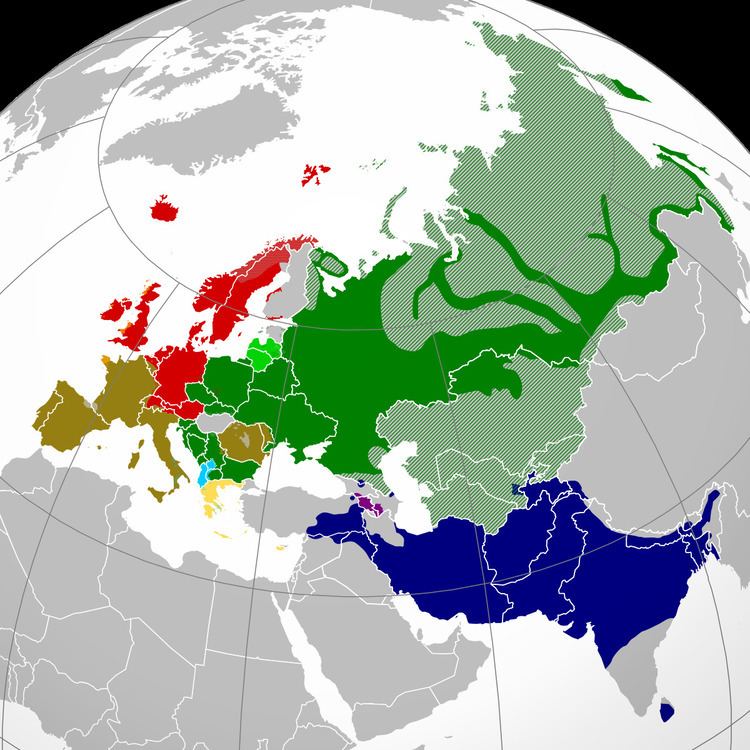Glottolog: indo1320 | ISO 639-5: iir | |
 | ||
Geographicdistribution: South, Central, Western Asia, South East Europe and the Caucasus / Total speakers = approximately about 1.5 billion in 15 countries Subdivisions: Indo-AryanIranianNuristani | ||
The Indo-Iranian languages or Indo-Iranic languages, constitute the largest and easternmost extant branch of the Indo-European language family. It has more than 1 billion speakers, stretching from the Caucasus (Ossetian) and the Balkans (Romani) eastward to Xinjiang (Sarikoli) and Assam (Assamese), and south to the Maldives (Maldivian).
Contents
The common ancestor of all of the languages in this family is called Proto-Indo-Iranian—also known as Common Aryan—which was spoken in approximately the late 3rd millennium BC. The three branches of modern Indo-Iranian languages are Indo-Aryan, Iranian, and Nuristani. Additionally, sometimes a fourth independent branch, Dardic, is posited, but recent scholarship in general places Dardic languages as archaic members of the Indo-Aryan branch.
Languages
Indo-Iranian consists of three groups:
Most of the largest languages (in terms of native speakers) are a part of the Indo-Aryan group: Hindustani (Hindi–Urdu, ~590 million), Bengali (205 million), Punjabi (100 million), Marathi (75 million), Gujarati (50 million), Bhojpuri (40 million), Awadhi (40 million), Maithili (35 million), Odia (35 million), Marwari (30 million), Sindhi (25 million), Rajasthani (20 million), Chhattisgarhi (18 million), Assamese (15 million), Sinhalese (16 million), Nepali (17 million), and Rangpuri (rajbanshi) (15 million). Among the Iranian branch, major languages are Persian (60 million), Pashto (ca. 50 million), Kurdish (35 million), and Balochi (8 million), with a total number of native speakers of more than 1471 million. Numerous smaller languages exist.
History
The Indo-Iranian languages derive from a reconstructed common proto-language, called Proto-Indo-Iranian.
The oldest attested Indo-Iranian languages are Vedic Sanskrit (ancient Indo-Aryan), Older and Younger Avestan and Old Persian (ancient Iranian languages). A few words from another Indo-Aryan language (see Indo-Aryan superstrate in Mitanni) are attested in documents from the ancient Mitanni kingdom in northern Mesopotamia and Syria and the Hittite kingdom in Anatolia.
Features
Innovations shared with other languages affected by the satem sound changes include:
Innovations shared with Greek include:
Innovations unique to Indo-Iranian include:
